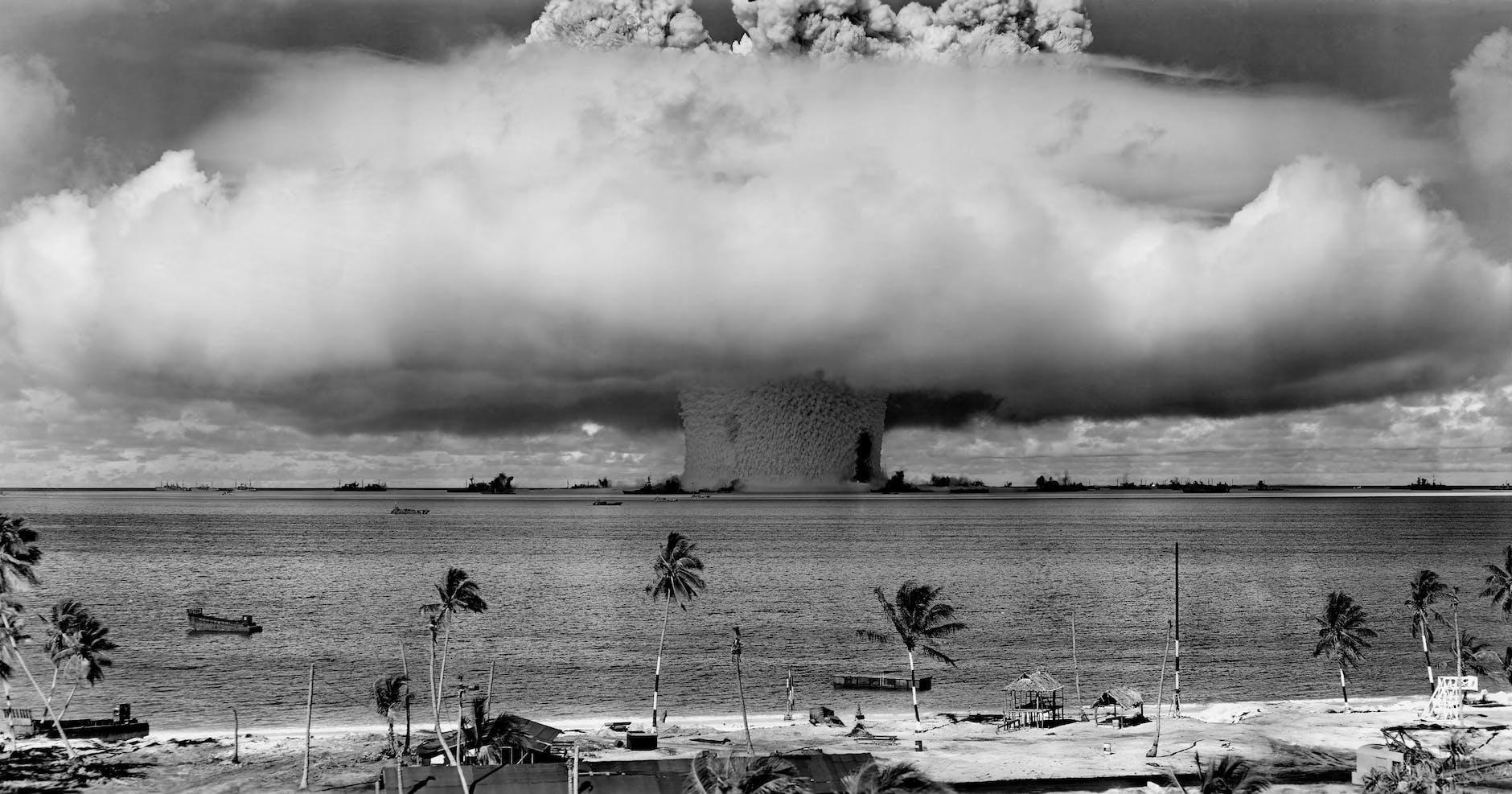October 10, 2023
Applying the principles of Fatal Certainty to current affairs
The sudden, obviously long-planned attack by Hamas forces across the border of Gaza with Israel has the entire world’s attention. President Joe Biden has promised that the United States’ support for Israel is “rock-solid.” Republicans in Congress blame the attack on Biden. People took to the streets celebrating the Hamas action in Yemen and other Arab capitals; but the government of the UAE condemned Hamas’ action, possibly reflecting that country’s recent closer relations with Israel, or Hamas’ ties with the hated (Shiite) Iranians. The legislative assembly in Iran, which has been said (by Hamas officials among others) to have been intimately involved in the planning of the attack, burst into applause when it was announced.
Israeli prime minister Benjamin Netanyahu has vowed revenge, and told all civilians living in Gaza to leave. Where they might go is an open question: Gaza, the third-most-densely populated “state” in the world, borders only Israel and Egypt. Clearly Israel will not be accepting any of the refugees; and Egypt has an allegedly closed border with Gaza, partly at the Israelis’ request, and does not obviously have the means to house and feed 2.4 million new residents.
An Israeli ground invasion of Gaza seems imminent. But after the dust settles, what will be the end state in, say, ten or twenty years?
In order to answer that question, we need to identify a few critical variables that could be used to define the broader future world within which the all the actors involved in this long-standing controversy will have to operate.
We could choose any number of these high-level variables, but for purposes of this short illustrative exercise, let us arbitrarily choose three. (Two variables result in the fabled 2×2 matrix, which results in overly simplistic explanations; four or more would generate sixteen or more worlds, too many to deal with here.)
[CAVEAT: A couple of stipulations up front: I make no claims for these variables being the “right” ones. There are no right ones, only “more useful” and “less useful.” Nor do I claim direct causality for them; that is, that my nominees cause the different alternative futures to emerge. Their entire utility arises from their ability to cause us to imagine the scenarios in question: in other words, to think of conditions that no extrapolative, past-data-based mental model could possibly come up with.]
Just off the top of my head, I might nominate the following:
- 2043 technological/military ability to control/protect physical territory: Secure vs. Near-impossible
- 2043 level of order in international affairs: Chaotic vs. Unipolar
- 2043 intensity of global ideological/religious division: High vs. Low
As I say, these three variables do not determine the future. But by varying them one against another, we can begin to imagine far different worlds for the Palestinian-Israeli situation than currently exist. Here are some ideas this sketchy exercise might suggest: storylines from 2023 that might explain “how we got there.”
First, a world in which physical territory can be secured, yet there is a chaotic world order and a high degree of ideological/religious division suggests a balkanization of the global order. One could imagine a world in which AI has rendered any widely shared “truth” an impossibility, and in which the most extreme and ideologically committed manage to claim physical territory for their adherents. Larger-scale national or even multinational loyalties cannot be maintained. This is a world in which sovereignty has devolved upon smaller geographic areas; trade and economic activity have plunged to a very low level; and in which those with access to the basics – food, weaponry, some modicum of manufacturing – will survive while others may starve.
In this world, the already balkanized territory of Israel, West Bank, Gaza, etc. may be divided up even further, as various ideological groups on all sides take the upper hand and demand total tribal loyalty from their people. No outside force is capable of altering the situation; since territories can be held more securely, the previously unstable territorial division has hardened, perhaps after some exchanges of territories, and has devolved to a lower level, possibly multiplying the number of separated and mutually suspicious territories.
In this world, 2023’s increasing nationalism and xenophobia in Israeli politics becomes ever greater, mirroring increasing stridency on the Palestinian side. Perhaps a sub-territory of more liberal Israelis secedes from the more authoritarian segment of society, and defends its own territory separately while advocating fruitlessly for a more humanitarian future. With no large-scale unipolar force from the outside capable of bringing consensus, order and peace, the region sputters along, with attempts to grab territory of neighbors generally failing, real economic growth impossible, and “the life of Man, solitary, poore, nasty, brutish, and short.”
I cannot go through all eight permutations of this collection of variables here, but let’s take one more: the polar opposite from the previous one. A world in which territory simply cannot be reliably controlled; with a global framework that has reversed the 2023 trend, and become more orderly; and in which the intensity of ideological/religious division has lessened markedly.
We can imagine that there could be a causal relation between the inability of any nation to control its territory and a desire for more global order. If no country is safe from incursion, only a strongly enforced global order could keep the world from devolving into something like the first scenario we sketched above. One could imagine (rigorously, of course) a series of terrorist attacks on major powers such as China, Europe, and the United States, and perhaps an explosion in destabilizing AI-driven propaganda, leading to a reinvigorated United Nations and a good deal of pressure from them to resolve all outstanding grievances and territorial/religious/ethnic disputes that could undermine the larger world order.
A war between Israel and Iran could have the same effect; Iran is a major supplier of oil to China in 2023, and China in turn supplies Iran with weaponry that may now destabilize the Middle East. China could experience a serious economic slowdown that either forces political change at home, or at least causes them to be less adventurous overseas, and to seek to restore more cordial relations with the U.S.
The result could be a far more stable and placid Middle East in 2043 than current trends might suggest. It would have probably been won via terrible, wrenching, near-catastrophic events; but this is how all extended periods of peace have historically been won.
As I say, these are not the “right” variables to use to anticipate the future that will occur. And even if each of the eight scenarios that emerge were fully fleshed out, no single one of them could “happen.” Each would have a vanishingly low chance of occurring, because each is too detailed, and our understanding of the causal relationships involved is so crude. All I can guarantee (more or less) is that by going through an exercise such as this, you will anticipate a fairly large number of things you never could have extrapolated from any model dependent on past data.
Any use of this type of alternative futures planning would have to explore a larger number of these potential combinations – all of them, at least in a cursory manner; four or five, preferably, in a deeper dive, to cover the fullest possible range of plausible futures for the Middle East. And then comes the real work: devising strategies that can maximize the likelihood of a good outcome for all concerned, regardless of which world occurs.
In any case, the great Noah Smith has written a piece on Substack that throws one of our variables – “Level of order in international affairs” – out completely, stating that the Pax Americana is over, and cannot be restored. Everything I know about the past and present tells me he is quite possibly correct. But the nothing I know about the future tells me that a rebound of American power and international influence cannot be entirely ruled out.
There is one past example that occurs to me that shows how the particular genius of a seemingly utterly spent international power can rebound. The popular historical narrative of Athenian empire is that it rose in the 500s BCE, flourished in the 400s, but was destroyed utterly with its defeat in the Peloponnesian War in 404 BCE by Sparta.
In fact, Athens had a very significant rebound, indeed, a “second Golden Age,” and restored its maritime empire to a huge degree. “After years of Spartan provocations,“ author John Hale wrote, “the Athenians [in 377 BCE] establish[ed] a Second Maritime League, in which Greek cities band together against the Spartan threat…. As Sparta [was] eclipsed, Athens embark[ed]on a second Golden Age in the fields of sculpture (Praxiteles), rhetoric (Isocrates and Demosthenes), and above all philosophy (Plato and Aristotle).”
While all data is from the past, and may not apply to the future, history at least does show us what has been, and may be again. The prospects for a Second American Century appear slight at the moment, but history can turn quickly.



